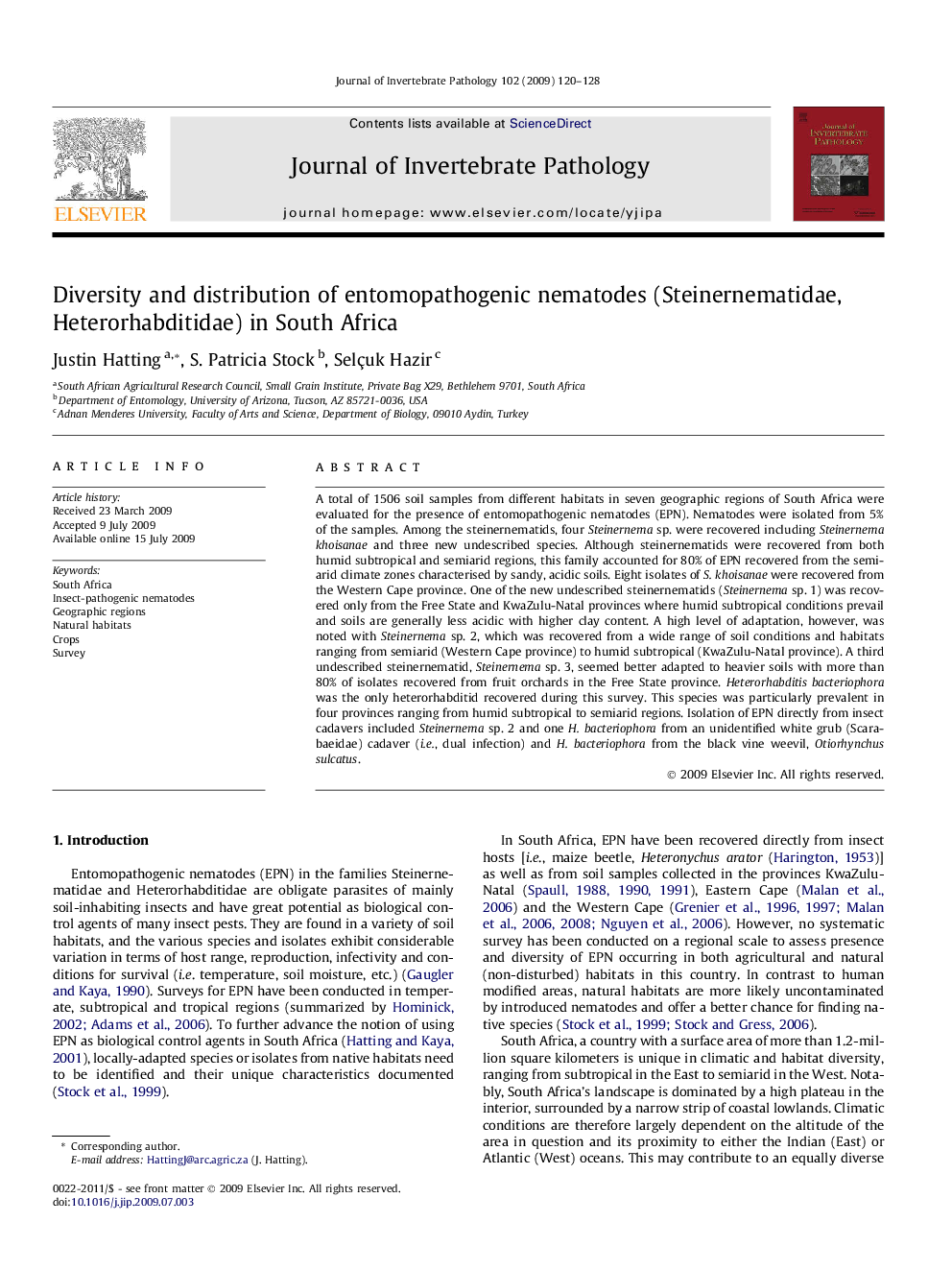| Article ID | Journal | Published Year | Pages | File Type |
|---|---|---|---|---|
| 4558010 | Journal of Invertebrate Pathology | 2009 | 9 Pages |
A total of 1506 soil samples from different habitats in seven geographic regions of South Africa were evaluated for the presence of entomopathogenic nematodes (EPN). Nematodes were isolated from 5% of the samples. Among the steinernematids, four Steinernema sp. were recovered including Steinernema khoisanae and three new undescribed species. Although steinernematids were recovered from both humid subtropical and semiarid regions, this family accounted for 80% of EPN recovered from the semiarid climate zones characterised by sandy, acidic soils. Eight isolates of S. khoisanae were recovered from the Western Cape province. One of the new undescribed steinernematids (Steinernema sp. 1) was recovered only from the Free State and KwaZulu-Natal provinces where humid subtropical conditions prevail and soils are generally less acidic with higher clay content. A high level of adaptation, however, was noted with Steinernema sp. 2, which was recovered from a wide range of soil conditions and habitats ranging from semiarid (Western Cape province) to humid subtropical (KwaZulu-Natal province). A third undescribed steinernematid, Steinernema sp. 3, seemed better adapted to heavier soils with more than 80% of isolates recovered from fruit orchards in the Free State province. Heterorhabditis bacteriophora was the only heterorhabditid recovered during this survey. This species was particularly prevalent in four provinces ranging from humid subtropical to semiarid regions. Isolation of EPN directly from insect cadavers included Steinernema sp. 2 and one H. bacteriophora from an unidentified white grub (Scarabaeidae) cadaver (i.e., dual infection) and H. bacteriophora from the black vine weevil, Otiorhynchus sulcatus.
